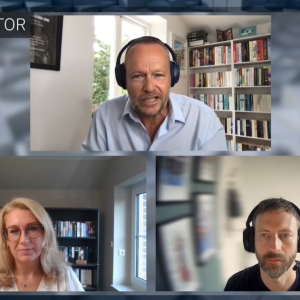While VEB Kombinat Robotron was, predictably, monopolising the limelight set aside for East European firms at CeBIT by announcing its plans for restructuring into a number of independently-operating concerns, those that ventured further inside the vast Halle 1 exhibition facility would have stumbled across Videoton, Hungary’s largest electronics supplier, which was quietly making an announcement to the effect that its transition to a decentralised corporate structure was now by and large complete.
Forint
Of course, nobody was suggesting that Videoton, the only Eastern equal to Robotron in terms of the state of its technology, will eclipse the potential and the desirability of the 70,000-strong East German operation, which is still being eyed up by Siemens and others despite protestations of Robotron will remain Robotron; but with 1989 turnover at the equivalent of $461m representing a jump of 21% from last year taking into account the devaluation experienced by the Hungarian forint against the Deutschmark during this period – a handful of joint ventures with the likes of SEL Alcatel and Bull, and a proven commitment to making full use of Western manufacturing processes, Videoton will clearly be amongst the best-placed to take advantage of future developments like the shift to hard currency trading and the relaxation of CoCom restrictions on exports to the East. Videoton’s information technology activities comprise IBM-compatible personal computers, graphic display terminals, printers and a local area network product: the gradual decentralisation of these operations started from its Budapest headquarters a full two years ago, and, although government thinking has since started to catch up, at the time this was completely against the grain of Hungarian business practice. In August 1989, Videoton sought the advice of Dusseldorf business consultancy firm Roland Berger und Partner, and the result is that today Videoton Electronics is a holding company with 16,000 staff employed in five separate, independent divisions controlling operations in mechanics, entertainment electronics – mostly televisions – automation, telecommunications and information technology.
By Mark John
These divisions are answerable to the holding company only in so far as their activities affect the overall strategic direction of the group as a whole, and, as long as they make a profit, the idea is that they will be free to explore the possibilities of any joint ventures and involve Western capital in the way that they see best: by splitting up operations in this way, Videoton hopes that it will be more flexible to market requirements in each of its five areas of interest. Already this has meant that all of Videoton’s data processing activities, put at $165m a year, will in future be handled by a new entity, Informatik GmbH, formed as a result of the strengthening of Videoton’s decade-old ties with Bull SA (CI No 1,347); Bull, which has the minority holding of 49%, will be using the company to make its DPS 7000 mainframes and DPX/2 Unix machines available in the East, while Videoton will be looking to Bull for management and distribution skills. And in the autumn of last year, SEL Alcatel and Videoton establish-ed a little-reported joint venture company to manufacture SEL’s System 12 exchanges in Hungary, involving the complete renovation of Videoton’s existing plant to provide for a capacity of 300,000 units a year, which would correspond to revenues in the region of $88m. A further venture, called VT Soft, has been set up with Burscheid, West Germany based KRS EDV GmbH and VTD Computer, Dusseldorf, in the field of software development. Videoton can also count on various alliances cultivated with firms in most of the important world markets, including Walton Computers in the UK – at the moment, however, these links are mainly helpful to Videoton only as a source of wider market information. For the future, Videoton plans to increase the level of exports to the West up from the current 10% of total turnover, while keeping its grasp on the Easter
n market – for Videoton, as for all Eastern firms, this will mean in the first count a dramatic cut in operating costs, with the workforce falling to 13,000 in the next five years and a complete renewal of manufacturing facilities.
Warships
Secondly, it will mean more joint ventures, and more contact with Western developers and engineers – this, Videoton admits, is the only way that it will be able to compete effectively. For information technology firms in the East, the progressive opening up of their markets to Western counterparts presents itself as a double-edged sword, but confidence is high at Videoton: the move to hard currency will mean, amongst other things, that trading with the Soviet Union, which accounts for much of Videoton’s sales, will become less problematic – because of the massive Russian trade deficit with Hungary, Videoton can sell to that market only if Soviet products to an equal value are sold to Hungarian firms, a situation that has in the past resulted in Soviet-produced warships finding their way into land-locked Hungary. But real progress cannot be made until the CoCom lists, which have succeeded in their aim of paralysing East-West relationships, are relaxed: and news last week that under concerted pressure from US business the Bush government may be ready by June to sweep away many of the CoCom restrictions on high-technology imports to Eastern Europe should provide the impetus for the newly-independent constituents of Videoton to develop more relationships in increasingly interesting areas.






